|
|
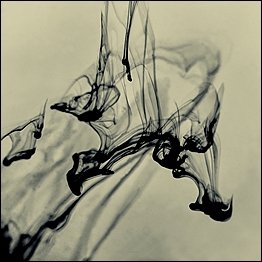 |
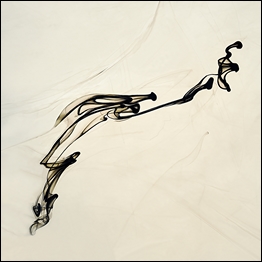 |
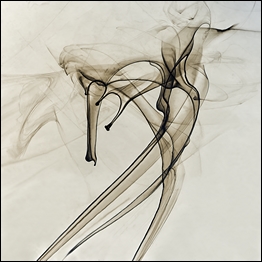 |
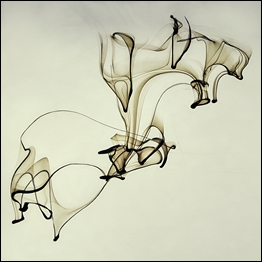 |
|
|
|
Composition nr 10 - 2024 |
Composition nr 35 - 2024 |
Composition nr
32 - 2024 |
Composition nr
33 - 2024 |
|
|
|
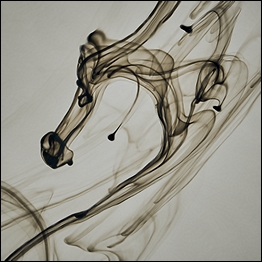 |
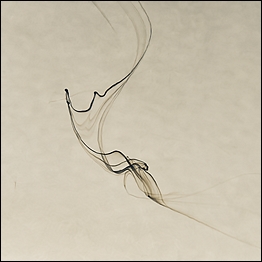 |
 |
 |
|
|
|
Composition nr 51 - 2024 |
Composition nr 57 - 2025 |
Composition nr
58 - 2025 |
Composition nr
60 - 2025 |
|
|
|
 |
|
|
|
 |
|
 The
images of the Fragments Series are a tribute to Fragmentism or to the
Poetics of the fragment, a literary trend developed in Italy in the early
1900s where the construction of the literary work does not take place
through an organized set of events and situations, but through a mosaic of
fragments of images and episodes unrelated to each other and which, in some
ways, unite this poetics with the expressionism. The
images of the Fragments Series are a tribute to Fragmentism or to the
Poetics of the fragment, a literary trend developed in Italy in the early
1900s where the construction of the literary work does not take place
through an organized set of events and situations, but through a mosaic of
fragments of images and episodes unrelated to each other and which, in some
ways, unite this poetics with the expressionism.
In the images of this series the formal element is reduced to
a fragment, dissolving any reference to visible reality to transform itself,
to paraphrase Anne Janowitz, into “a partial whole either a remnant of
something once complete and now broken or decayed, or the beginning of
something that remains unaccomplished.”. In all of this, the image is
transformed into a radiant moment, out of time, which can never be completed
because it aspires to infinity.

Io
sono come te freddo e nudo,
fratello. Sono solo e infecondo.
Scipio Slataper
Perduta ha la sua voce
la sirena del mondo,
e il mondo è un grande deserto.
Nel deserto io guardo
con asciutti occhi me stesso.
Camillo Sbarbaro |
|
|
 |
 |
|
|
|
Composition nr 101 - 2021 |
Composition nr 102 - 2021 |
|
|
|
 |
 |
|
|
|
Composition nr 103 - 2021 |
Composition nr 104 - 2021 |
|
|
|
 |
 |
|
|
|
Composition nr 105 - 2021 |
Composition nr 106 - 2020 |
|
|
|
 |
 |
|
|
|
Composition nr 107 - 2020 |
Composition nr 109 - 2021 |
|
|
|
|
 |
|
 The
02INFINITY series, or rather The Ekpýrosis, is a research on the concept of
abstraction that originates from the de-contextualization of an ordinary
object, or part of it, to the point of dissolving any reference to visible
reality. It is in this way that the formal element, reduced to fragments, is
regenerated towards a new expressive solutions. The
02INFINITY series, or rather The Ekpýrosis, is a research on the concept of
abstraction that originates from the de-contextualization of an ordinary
object, or part of it, to the point of dissolving any reference to visible
reality. It is in this way that the formal element, reduced to fragments, is
regenerated towards a new expressive solutions.
The
Ekpýrosis, in Greek philosophy, is the universal conflagration, also called
"great fire", which according to Stoic physics periodically determines the
end of everything in a cosmic fire, from which everything is reborn in a
palingenesis. Each period of time is born out of fire and culminates in
destruction through fire; in many philosophies of antiquity we find the idea
that the universe is born and ends in fire, or is destroyed to be reborn
from its own ruins.
 Nor
shall this peace sleep with her; but as when the bird of wonder dies, the
maiden phoenix, her ashes new create another heir as great in admiration as
herself. Nor
shall this peace sleep with her; but as when the bird of wonder dies, the
maiden phoenix, her ashes new create another heir as great in admiration as
herself.
W. Shakespeare - Henry VIII
|
|
|
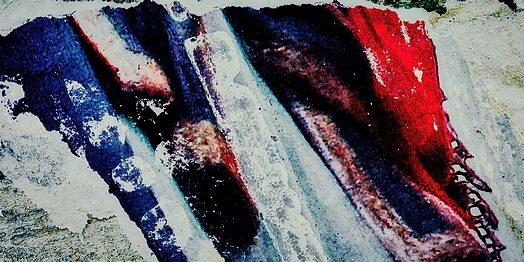 |
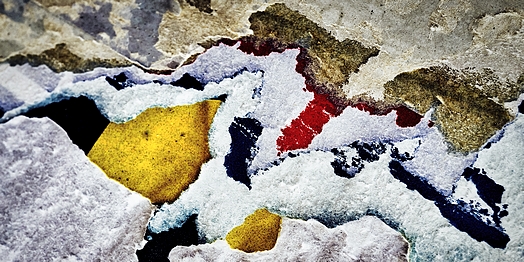 |
|
|
|
Composition nr
09 - 2022 |
Composition nr
11 - 2022 |
|
|
|
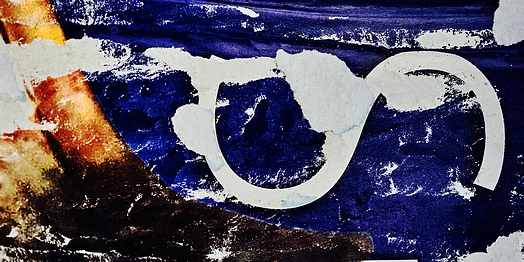 |
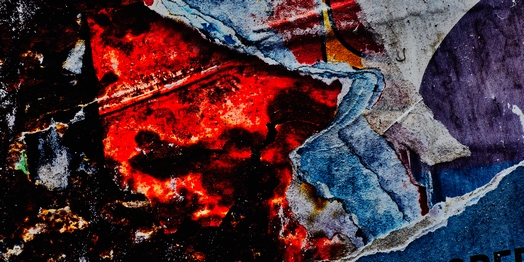 |
|
|
|
Composition nr
12 - 2022 |
Composition nr 20 - 2022 |
|
|
|
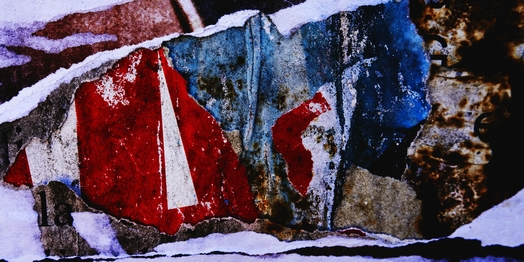 |
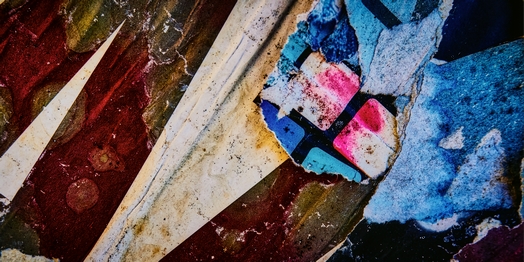 |
|
|
|
Composition nr
22 - 2022 |
Composition nr
28 - 2022 |
|
|
|
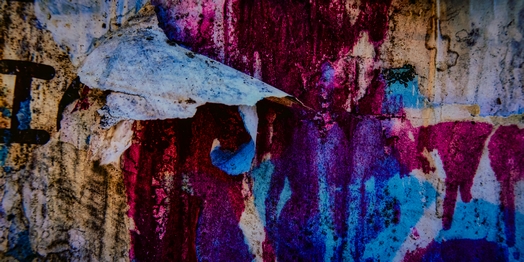 |
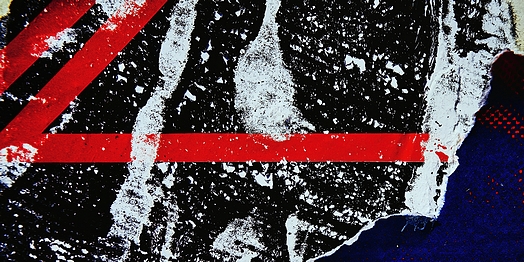 |
|
|
|
Composition nr
29 - 2022 |
Composition nr
31 - 2022 |
|
|
|
|
|
 |
|
 |
|
 Although
the seed had already been sown since the seventeenth century, it was in the
twentieth century that the revolt of artists against the concept of
"beauty", or at least the denial of the aesthetics of beauty, exploded in
all its virulence, inside the historic avant-gardes, especially Cubism,
Dadaism and Expressionism. This last movement, in particular, exalting the
emotional value of art, seeks the subjective vision of reality and tries to
represent the anxieties of modernism and the ugliness masked by bourgeois
hypocrisy. In representing this, expressionism does not hesitate to use
unpleasant images, indeed, never as with expressionism does 'ugly' become
art! Although
the seed had already been sown since the seventeenth century, it was in the
twentieth century that the revolt of artists against the concept of
"beauty", or at least the denial of the aesthetics of beauty, exploded in
all its virulence, inside the historic avant-gardes, especially Cubism,
Dadaism and Expressionism. This last movement, in particular, exalting the
emotional value of art, seeks the subjective vision of reality and tries to
represent the anxieties of modernism and the ugliness masked by bourgeois
hypocrisy. In representing this, expressionism does not hesitate to use
unpleasant images, indeed, never as with expressionism does 'ugly' become
art!
Flowers have always fascinated me for their strong symbolic charge linked to
the cycle of life and death and for their representation of the ephemeral
concept of beauty. In the same way, I found in them the perfect dichotomy
between the concept of beauty and ugliness that fulfilled in the short
passage of their existence, from sprout to death. The formal beauty of the
anthesis is followed by its metamorphosis towards decadence... and even this
decadence can become a beauty expression.

Man screams from the depths of his soul;
the whole era becomes a single,
piercing shriek.
Art also screams, into the deep darkness,
screams for help, screams for the spirit.
This is Expressionism.
Hermann Bahr |
|
|
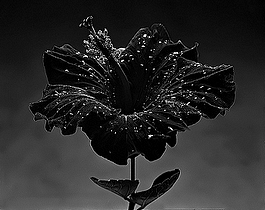 |
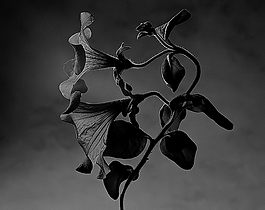 |
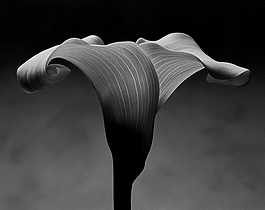 |
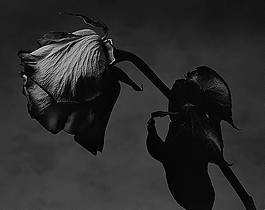 |
|
|
|
Ibiscus - composition nr
4 - 2013 |
Surfinia - composition nr
4
- 2012 |
Calla - composition nr
2 - 2012 |
Dying Rose - composition nr 3 - 2012 |
|
|
|
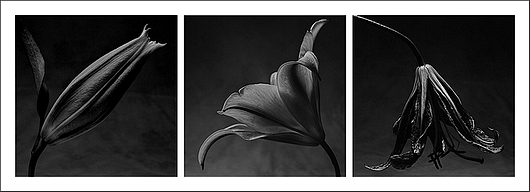 |
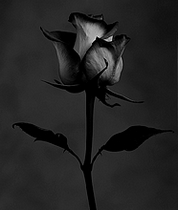 |
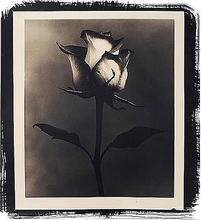 |
|
|
|
Triptych Rise and Fall - 2012 |
Rose - composition nr 4 - 2013
|
Rose - composition nr 4 - 2013
Platinum Palladium Print |
|
|
|
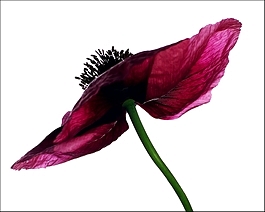 |
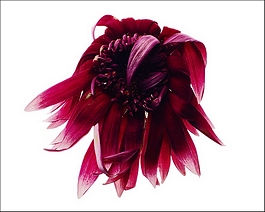 |
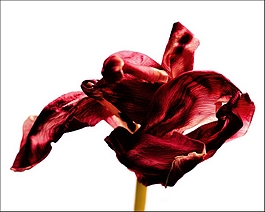 |
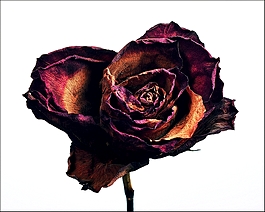 |
|
|
|
Dying Poppy - CL 1 - 2012 |
Dying Gerbera - CL 2 - 2012 |
Dead Tulip - CL 1 - 2017 |
Dead Rose - CL 1 - 2017 |
|
|
|
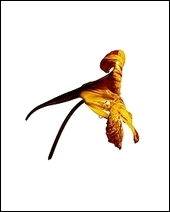 |
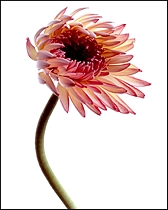 |
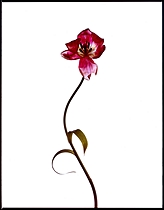 |
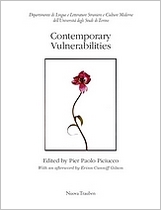 |
|
|
|
Dying Nasturtium - CL 2 - 2017 |
Dying Gerbera - CL 3 - 2017 |
Dying Tulip - CL 3 - 2017 |
Dying Tulip - CL 3 - 2017
book cover |
|
|
|
|

|
|
 Marcus
Vitruvius Pollonius in the first book of “De architectura” expresses a key
concept from which, in his opinion, the three components of architecture can
be extrapolated: Utilitas, Firmitas and Venustas. The latter, Venustas
i.e., beauty, can in some respects be regarded as Eve's apple: something one
is almost afraid of, but for which one feels an irrational attraction. Marcus
Vitruvius Pollonius in the first book of “De architectura” expresses a key
concept from which, in his opinion, the three components of architecture can
be extrapolated: Utilitas, Firmitas and Venustas. The latter, Venustas
i.e., beauty, can in some respects be regarded as Eve's apple: something one
is almost afraid of, but for which one feels an irrational attraction.
The U.S. historian Philip
Johnson, often emphasized during his lectures at Yale University, the
mystery of beauty. Why do we choose the beautiful over the comfortable? We
do not know, but nevertheless the quest for beauty always keeps coming up.
If we place this discourse in a historicist view indeed it is true. The
“beautiful” inextricably continues to be a feature, voluntarily or not,
sought after in architecture. Whether through new forms or the rehashing of
more archaic ones. And what is most destabilizing is the fact that Venustas
alone influences Utilitas and Firmitas more than these two together do on
Venustas itself. It is therefore Venustas that is in charge ...
always!

My work is not about "form follows function"
but "form follows beauty" or, even better,
"form follows feminine."
Oscar Niemeyer |
|
|
 |
 |
|
|
|
Church of San Michele Arcangelo - study 01 2021 |
Church of San Michele Arcangelo - study 02 2021 |
|
|
|
 |
 |
|
|
|
Church of San Lorenzo - study 04 2023 |
Church of San Ponziano - study 02 - 2024 |
|
|
|
|
|
 |
|
|
|
|
 They
say about Me They
say about Me
Born in Nuoro, Italy in 1961, he has been passionate about
photography since he was a boy and completed his studies in Milan at the
Brera Academy of Fine Arts, where he graduated with honors in 1986 with a
thesis on the evolution of photographic portraiture from the early twentieth
century to the 1980s. During the last year of the course of study he began
to work as a photographer in the field of fashion and produced editorial
services for “Beauty” magazines, small advertising campaigns of then
emerging fashion designers and the photographic portraits of contemporary
Milanese artists; following his graduation he decided to move to Paris
where, however, the contrast between the too many compromises of the fashion
world and his own extraneous nature led him to abandon this world. Later,
after devoting himself for many years to journalism and outdoors
photography, at the dawn of the new millennium he began to devote himself to
fine art photography, which he himself defined as “the possibility of
working apart from the concept of commission.” With the photographic series
Flowers in the early 10s of this century, shot in studio and in large analog
format, he gained international recognition from several art magazines and a
number of collectors of photographic works printed with the
platinum-palladium technique. Later, after a series on the urban landscape,
he devoted himself totally to the search for informal aesthetics; thus the
series Fragments, Ekpýrosis and Phaos were born, characterized by the search
for the abstraction of the everyday object, with its de-contextualization
and destruction until its rebirth in a new image. But it is with the series
Materia that the research on the concept of informal perception in
photography finds the ideal synthesis of the union between the expressive
possibilities of form and the mechanical medium of shooting, where the clash
between fluids of different density and color creates extremely fleeting
forms that give rise to compositions that last only for an instant, only to
disappear into the matter itself.
Ronald
Loughty - ArtVille Magazine |
|
|
|
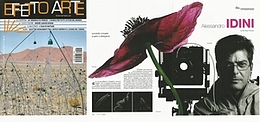 |
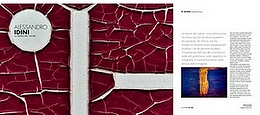 |
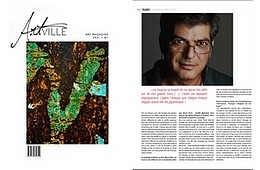 |
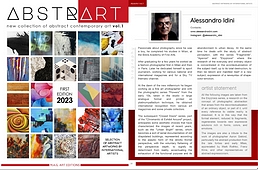 |
|
|
|
Effetto Arte - 2016 |
FotoIt - 2021 |
ArtVille - 2022 |
AbstrArt Vol. 1 - 2023 |
|
|
|
|
|
 |
|
|
|
|
|
|
|
|
|
|
|
|
|
|
|
|
|
|
|
|
|
|
|
|
 |
|
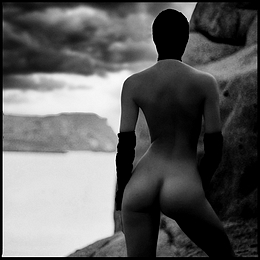 |
|
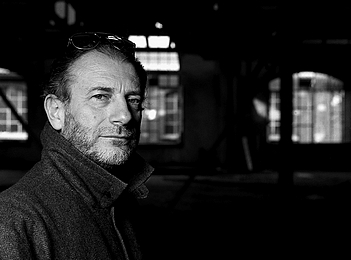 |
|
|
|
|
|
From my Fashion Works:
Beauty Line Magazine - 1986 |
|
From my Nudes Works:
Nude #11 - 1986 |
|
From my Portraits Works:
Portrait of Umberto Mariani - Milano 1987 |
|
|
|
|
|
|
|
|
|
|
|
|
|
 |
|
|
|

 |
|
|
|
|
|
abstract photography -
photographie abstraite - fotografia astratta |
|
|
|
Alessandro Idini © 2024-2025 - all rigths reserved |
|
web site optimized for
1366 x 768 screen |
|
|
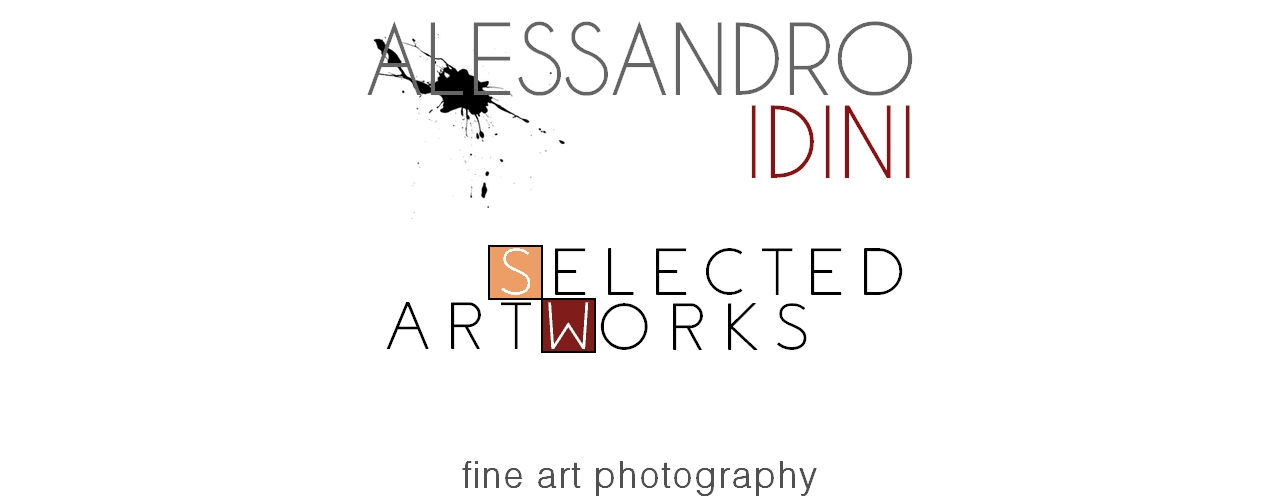

 If
we accept the idea that the purpose of photography is to return a coherent
and understandable image of reality and we do not consider the fact that
reality itself is not entirely objective, we cannot understand that the
perception of everything that surrounds us it is nothing more than the fruit
of our mental process that processes visual information. Therefore what we
call reality is only a set of individual, changing and unstable perceptions.
It is in this area that my research on informal photography moves, where the
realism of the mechanical medium is replaced by the perception of shape and
colours, sometimes unique and unrepeatable as in the encounter between
fluids of different colors and densities, other times with the
de-contextualization of an ordinary object, or part of it, to the point of
dissolving any reference to consolidated reality and regenerating it in a
new expressive solution. In any case, the "real" data is replaced by the
"possible" one and in this way reality is perceived through the senses,
where it is the mind of the observer that attributes meaning to what he
sees.
If
we accept the idea that the purpose of photography is to return a coherent
and understandable image of reality and we do not consider the fact that
reality itself is not entirely objective, we cannot understand that the
perception of everything that surrounds us it is nothing more than the fruit
of our mental process that processes visual information. Therefore what we
call reality is only a set of individual, changing and unstable perceptions.
It is in this area that my research on informal photography moves, where the
realism of the mechanical medium is replaced by the perception of shape and
colours, sometimes unique and unrepeatable as in the encounter between
fluids of different colors and densities, other times with the
de-contextualization of an ordinary object, or part of it, to the point of
dissolving any reference to consolidated reality and regenerating it in a
new expressive solution. In any case, the "real" data is replaced by the
"possible" one and in this way reality is perceived through the senses,
where it is the mind of the observer that attributes meaning to what he
sees. 
![]()
 According
to Aristotle, matter is the substratum of every change, of every movement of
form. It is a principle of things, constitutive of corporeality. Thus
conceived, matter is pure indeterminacy, knowable only indirectly, arguing
its existence as necessary for the composition of reality. In this way
matter is understood as power, pure capacity, which is nothing, but which
can become something.
According
to Aristotle, matter is the substratum of every change, of every movement of
form. It is a principle of things, constitutive of corporeality. Thus
conceived, matter is pure indeterminacy, knowable only indirectly, arguing
its existence as necessary for the composition of reality. In this way
matter is understood as power, pure capacity, which is nothing, but which
can become something.









 T
T








 The
02INFINITY series, or rather The Ekpýrosis, is a research on the concept of
abstraction that originates from the de-contextualization of an ordinary
object, or part of it, to the point of dissolving any reference to visible
reality. It is in this way that the formal element, reduced to fragments, is
regenerated towards a new expressive solutions.
The
02INFINITY series, or rather The Ekpýrosis, is a research on the concept of
abstraction that originates from the de-contextualization of an ordinary
object, or part of it, to the point of dissolving any reference to visible
reality. It is in this way that the formal element, reduced to fragments, is
regenerated towards a new expressive solutions.



























 Marcus
Vitruvius Pollonius in the first book of “De architectura” expresses a key
concept from which, in his opinion, the three components of architecture can
be extrapolated: Utilitas, Firmitas and Venustas. The latter, Venustas
i.e., beauty, can in some respects be regarded as Eve's apple: something one
is almost afraid of, but for which one feels an irrational attraction.
Marcus
Vitruvius Pollonius in the first book of “De architectura” expresses a key
concept from which, in his opinion, the three components of architecture can
be extrapolated: Utilitas, Firmitas and Venustas. The latter, Venustas
i.e., beauty, can in some respects be regarded as Eve's apple: something one
is almost afraid of, but for which one feels an irrational attraction.





 They
say about Me
They
say about Me









